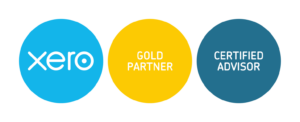Is Your Brewery Ready for a Second Location?

Opening a second location is a big deal. Whether it’s another taproom, a full production space, or just a new place to sell more pints, expansion sounds exciting.
And it can be. But before you sign a lease, order more fermenters, or tell your customers what’s coming, you’ve got to ask one tough question:
Can your numbers support it?
Because while a second location might bring in more revenue, it also brings more overhead, more risk, and a much tighter margin for error.
Let’s walk through what you need to know, financially, before you start scouting new addresses.
Is Your First Location Actually Profitable?
Let’s start with the most basic (but often skipped) question. If your current location isn’t profitable, a second one won’t fix it. It’ll just double the problems.
We’ve seen it happen. A brewery breaks even or turns a small profit in their flagship location. They assume more volume will solve everything. They open a second taproom and suddenly they’re juggling two rent payments, two sets of staff, and two utilities bills, with the same fuzzy understanding of their numbers as before.
If you don’t already have a clean, clear P&L that shows consistent monthly profits, now’s not the time to expand.
Look at your last 12 months. Not just top-line revenue, but your actual profit margins.
Before investing in a Second Location, ask yourself: Are you consistently clearing 20% or more month to month? Are costs under control? Do you clearly understand which parts of your business generate profit and which don’t?
If not, slow down. Run the numbers before making a move.
Taproom or Full Brewery?
Another important question: what exactly are you opening?
A second taproom that pulls from your existing production facility is very different from launching a whole new brewing space. Taprooms tend to carry lower capital costs and let you test new markets with less risk. But they still bring staffing, licensing, and operating costs you need to plan for.
A second production facility takes everything up a notch. Bigger bills, bigger buildouts, and a longer path to profit. You’ll need to look at cash reserves, equipment financing, and the breakeven point of that new space before making the leap.
No matter which route you take, the same logic applies when planning a second location. If your current systems, staff, and finances are already stretched thin, adding more complexity will only make things harder. Reviewing your restaurant’s P&L: a straightforward guide to staying profitable in 2025 can help you identify areas to optimize and ensure that expansion doesn’t compromise your profitability.
Cash Flow, Not Just Profit
Plenty of breweries look profitable on paper but still run into cash flow problems. That’s why your profit and loss statement can’t be the only thing you look at before expanding.
Expansion requires cash. Real cash. The kind that covers deposits, equipment, buildouts, and payroll before your doors ever open.
This is where things can get messy. Even a small taproom buildout can take six months and cost more than expected. That’s fine, if you’ve planned for it.
If your business is tight on cash or always riding the edge, a second location could push it over.
Your Balance Sheet Has Clues
Your balance sheet shows what you own, what you owe, and how stable your business really is. Don’t ignore it.
Before expanding, ask yourself:
- Are your current assets strong enough to cover short-term obligations?
- Do you have too much short-term debt?
- Is your inventory turning over fast enough?
- Are there underperforming assets tying up cash?
These questions matter. Your balance sheet tells the story behind the scenes. Make sure you understand it.
Use a 13-Period Calendar
If you’re not already using a 13-period calendar, now’s a great time to start. It breaks the year into 13 equal four-week chunks instead of the usual 12 uneven months.
That might not sound like a big shift, but it changes everything about how you see your numbers.
Why? Because months aren’t created equal. Some have four weekends, others have five. Some end midweek, others on a Sunday. If you’re comparing January to February or June to July, you’re looking at different lengths of time with different sales patterns, which makes it hard to tell what’s actually improving and what’s just seasonal noise.
This matters even more if your brewery has any seasonality, which most do. That extra weekend in a month can skew your revenue and labor numbers, making your reports look better or worse than they really are. A 13-month calendar flattens that out. You get clean, consistent data every four weeks. You can track trends more clearly. You can measure success across locations more accurately. And you can make faster, more confident decisions.
But here’s the catch: you can’t do this in QuickBooks.
QuickBooks is locked into monthly reporting. There’s no way to cleanly run a 13-period calendar, no matter how much you hack around it. You’ll always be stuck with apples-to-oranges comparisons.
If you’re not using Xero for your brewery, you don’t really know your numbers in the way you need to. Xero supports custom reporting periods, which means you can finally set up that 13-period calendar properly. You can slice your financials into the rhythm your business actually runs on, not the arbitrary one the calendar gives you.
If you’re thinking about adding another location, you need this kind of visibility. Without it, you’re guessing.
And expansion isn’t the time to guess.
What Now?
If you’ve read this far, the idea of opening a second location probably isn’t just a daydream.
But here’s the truth…. Numbers don’t lie.
The difference between a second location that thrives and one that quietly drains your cash comes down to your financial foundation. You don’t need a hunch. You need a real look at your margins, your cash flow, and your ability to carry a new set of costs.
If you’re not confident your brewery can handle that, or if you want someone to help you figure it out, that’s what we do.
We help breweries make growth decisions based on actual financials every day.
Take just 20 minutes of your time to chat with our team before you make any huge financial decisions. We’re here to help.
Use the calendar below to book an introductory call.
Until then, check out our YouTube series on why we recommend Xero over QuickBooks for breweries. We think you’ll find it helpful.
Until next time!

By MATT CIANCIARULO



